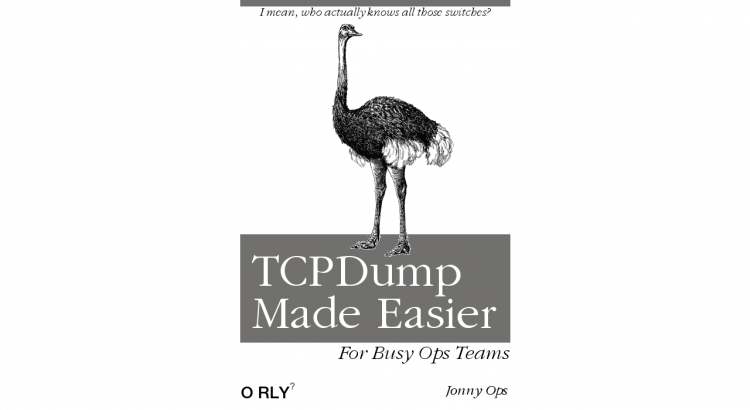One to read: “Support for Speakers”
This is great content for anyone who wants to support someone who’s speaking at a conference. Thanks!
This was automatically posted from my RSS Reader, and may be edited later to add commentary.
One to read: “Support for Speakers”
This is great content for anyone who wants to support someone who’s speaking at a conference. Thanks!
This was automatically posted from my RSS Reader, and may be edited later to add commentary.
At work, we share tips and tricks, and one of my colleagues recently called me out on the following stanza I posted:
I like this [ansible] one for Debian based systems:
- name: "Apt update, Full-upgrade, autoremove, autoclean"
become: yes
apt:
upgrade: full
update_cache: yes
autoremove: yes
autoclean: yes
And if you’re trying to figure out how to do that in Shell:
apt-get update && apt-get full-update -y && apt-get autoremove -y && apt-get autoclean -y
His response was “Surely you’re not logging into bash as root”. I said “I normally sudo -i as soon as I’ve logged in. I can’t recall offhand how one does a sudo for a string of command && command statements”
Well, as a result of this, I looked into it. Here’s one comment from the first Stack Overflow page I found:
You can’t run multiple commands from
sudo– you always need to trick it into executing a shell which may accept multiple commands to run as parameters
So here are a few options on how to do that:
sudo -s whoami \; whoami (link to answer)sudo sh -c "whoami ; whoami" (link to answer)An alternative using eval so avoiding use of a subshell:
sudo -s eval 'whoami; whoami'
Why do I prefer the last one? Well, I already use eval for other purposes – mostly for starting my ssh-agent over SSH, like this: eval `ssh-agent` ; ssh-add
http://sysadministrivia.com/episodes/S3E13
This is a fascinating episode. Jason Scott works for the Internet Archive, personally hosts a large archive of historic BBS text files, and is an engaging interviewee (plus, he talks a lot :) )
If you’re interested in how archive.org works (including how they choose disks for their storage, how content is processed and managed, whether they keep spam, how many hours of “sermons” have been stored, etc), or what happens when you get sued for USD2,000,000,000, it’s well worth a listen.
Ever been told that IPsec is hard? Maybe you’ve seen it yourself? Well, Paul Wouters and Sowmini Varadhan recently co-delivered a talk at the NetDev conference, and it’s really good.
Sowmini’s and Paul’s slides are available here: https://www.files.netdevconf.org/d/a18e61e734714da59571/
A complete recording of the tutorial is here. Sowmini’s part of the tutorial (which starts first in the video) is quite technically complex, looking at specifically the way that Linux handles the packets through the kernel. I’ve focused more on Paul’s part of the tutorial (starting at 26m23s)… but my interest was piqued from 40m40s when he starts to actually show how “easy” configuration is. There are two quick run throughs of typical host-to-host IPsec and subnet-to-subnet IPsec tunnels.
A key message for me, which previously hadn’t been at all clear in IPsec using {free,libre,open}swan is that they refer to Left and Right as being one party and the other… but the node itself works out if it’s “left” or “right” so the *SAME CONFIG* can be used on both machines. GENIUS.
Also, when you’re looking at the config files, anything prefixed with an @ symbol is something that doesn’t need resolving to something else.
It’s well worth a check-out, and it’s inspired me to take another look at IPsec for my personal VPNs :)
I should note that towards the end, Paul tried to run a selection of demonstrations in Opportunistic Encryption (which basically is a way to enable encryption between two nodes, even if you don’t have a pre-established VPN with them). Because of issues with the conference wifi, plus the fact that what he’s demoing isn’t exactly production-grade yet, it doesn’t really work right, and much of the rest of the video (from around 1h10m) is him trying to show that working while attendees are running through the lab, and having conversations about those labs with the attendees.

I’m sure that anyone doing operational work has been asked at some point if you can run a “TCPDump” on something, or if you could get a “packet capture” – if you have, this tool (as spotted on the Check Point community sites) might help you!
Using simple drop-down fields for filters and options and using simple prompts, this tool tells you how to run each of the packet capturing commands for common firewall products (FortiGate, ASA, Check Point) and the more generic tcpdump tool (indicated by a Linux Penguin, but it runs on all major desktop and server OSs, as well as rooted Android devices).
Well worth a check out!
Format: Five podcasting guys standing in front of an audience. No slides. Discussion. 200ish attendees
Audio: https://latenightlinux.com/late-night-linux-extra-episode-05/
Slot: Slot 9 Saturday (Closing Session) 16:00-17:00
Notes: My first main stage show. Two questions proposed by the podcasters and a discussion with the audience. Slightly waffly on my part, mostly because I was tired. I also was taking the “mic around to the audience”. Skilfully mastered by Joe Ressington.
Well worth a listen – I’d like to know your views on anything raised in the podcast in the comments!
Oh, and at the end, I tried to make a point, but couldn’t remember the exact quote – here it is: “Be who you needed when you were younger” – Brad Montague
Enjoy :)
Format: Websites loaded on projector. Classroom layout. 20 attendees.
Websites: hacktoberfest.digitalocean.com, github.com
Video: None
Slot: Slot 4 Saturday 12:30-13:00
Notes: This was an opportunity to promote Hacktoberfest, and explain how github pull requests work.
I’ve been inspired by this post by one of the leadership team at the company I work for to talk about my working day.
Format: Slide deck from a laptop standing next to a pillar in the open area. 10 attendees.
Slides: https://jon.sprig.gs/blog/post/slideshow/amateur-radio
Video: None
Slot: Day 2 (Sunday) Slot 4 12:30-12:55
Notes: Very quick summary of what you can do with Amateur Radio. Trying to encourage people to take up Amateur Radio from an Open Source mind set. Followed up with two attendees, one who was licensed, another who might get a license. Felt good :)
One to read: “Automating backups on a Raspberry Pi NAS”

In the first part of this three-part series using a Raspberry Pi for network-attached storage (NAS), we covered the fundamentals of the NAS setup, attached two 1TB hard drives (one for data and one for backups), and mounted the data drive on a remote device via the network filesystem (NFS). In part two, we will look at automating backups. Automated backups allow you to continually secure your data and recover from a hardware defect or accidental file removal.
This was automatically posted from my RSS Reader, and may be edited later to add commentary.